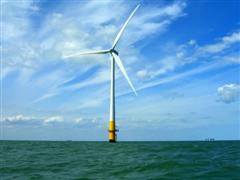
Monroe County, NY is one of several locations identified by NYPA, through its Great Lakes Offshore Wind Project, to potentially host an offshore wind farm. Yet the reception by local communities has been less than welcoming.
In recent weeks the town boards in Greece and Webster have voted unanimously to oppose the authority’s project, and Monroe County legislators have been entertaining their own ban.
While any significant development project has its pros and cons, the ire against offshore wind farms in Lake Ontario seems mostly driven by NIMBY (not in my backyard). There’s little opposition to wind power in general. 75% of respondents to a Rochester Business Journal poll said they supported it at least somewhat, and a majority strongly supported it. And why not? It’s clean, renewable, and cost effective. Further, a $1B project is bound to be a boon to the local economy.
Perhaps most importantly, it lessens our dependence on coal for electricity production. While coal has a reputation as “cheap fuel”, there are many hidden costs in terms of government subsidies, pollution, and environmental impacts, not to mention the glut of health and safety issues plaguing coal miners.
However, Rochester is a long way from West Virginia. We don’t see the strip mined hillsides here. Sure, we still suffer from acid rain, but it’s way better than it was in the 1970’s, and we’re used to it. Wind turbines are new, potentially local, and might be seen from your house. This has fostered an understandable sense of fear in lakeside towns, but has also ushered in a groundswell of misinformation.
Conservative Examiner Willard Fox recently wrote about wind power and published “some of the negatives you may not have read about.” Although in reality, you may not have heard about these “facts” because many of them are untrue or misleading.
For example, while wind power will not eliminate the need for conventional energy sources like coal and nuclear, it does lessen the demand on them. This means the existing plants burn less non-renewable fuel, and fewer new plants need to be built to meet the ever increasing American appetite for power. A concern is also levied against the need to build massive electrical storage facilities, which would be nice except that we don’t yet know how to store electricity on an industrial scale. If we did, wind and solar power would be even more attractive options than they are now. And concerns about power transmission and its impact on the county’s grid are the same issues that would arise if any power generation facility was built using any technology. The value of cheap power to the community far outweighs the investment in the power grid.
The more valid concerns are when Fox cites the issues of noise, property values, and simply having to look at the wind farm looming on the lake’s horizon. He says, “They [the turbines] produce a noise level of a car that is doing over 60 miles per hour.” This is a good point, but keep in mind the proposal is to build the turbines over two miles offshore. Would you worry about buying a house two miles from a major highway? Probably not. Further, studies have shown wind farms have no long term impact on property values. Are they an eyesore? Maybe, but you do get used to things. Remember when cell towers were going to destroy the landscape? Now you don’t even notice them.
The bottom line is that the country needs wind power and other forms of green energy. It has to be located somewhere. Perhaps it would be better to ask yourself if you’d rather live in the same town as a wind farm or a strip mine, a coal fired power plant, or another nuclear reactor? Sure, it would be great if we could just make our energy needs some other community’s problem. But if we’re going to step up to the plate, then a few windmills aren’t looking so bad now are they?
